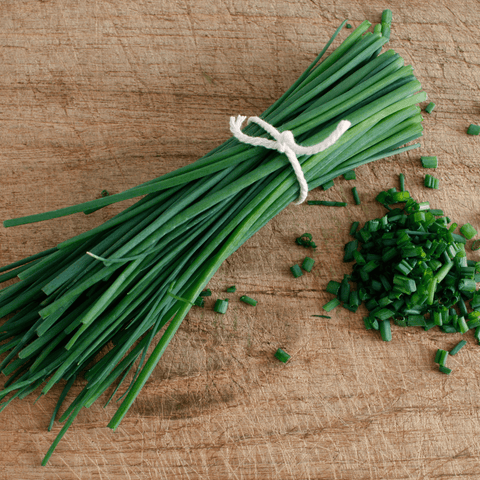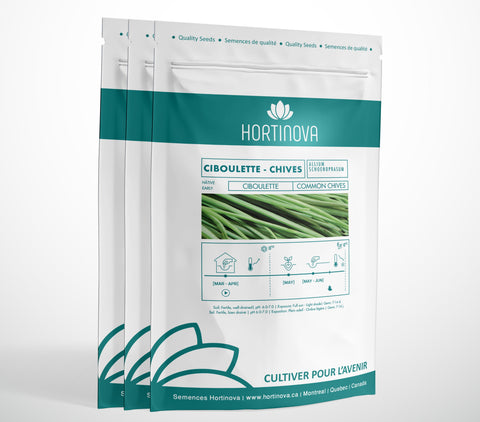

Hortinova
CHIVE - Open Pollinated Chives Seeds
Allium schoenoprasum
- Commonly known as onion chives.
- Medium thick shafted chive variety.
- Grows in clumps of small slender bulbs.
- Produces thin, tubular, blue-green leaves reaching 20 cm.
- Ideal for cultivation in pots and the preparation of dry herbs.
For a head start in colder regions, start chive seeds indoors 6 to 8 weeks before the last spring frost. Outdoors, sow seeds as soon as the soil is workable in the spring. They can take a few weeks to germinate. For the best germination and growth, the temperature of the soil should be between 60º and 70ºF (15º and 21ºC). Sow seeds about 2 inches apart and no more than ¼ inch deep. Cover with a thin layer of soil. Once seedlings emerge, thin so that plants are spaced between 4 to 6 inches apart in all directions.
PLANT OUT: Transplants need good growth before being set in the garden. transplants outdoors once the threat of frost has passed.
TEMPERATURE: Chives are considered a cool-season crop, meaning they grow best in the spring and fall. The harsher temperatures of summer usually cause them to go dormant until cool weather arrives again.
WATER: Although chives are drought tolerant, it’s important to give them consistent watering throughout the growing season for high yields. Moisten the soil thoroughly when watering.
FEED: For good production, top-dress with a nitrogen-heavy fertilizer in late spring or early summer if your soil is not already nutrient-rich.
PROTECT: Chives’ small bulbs grow near the soil surface, so use mulch to conserve moisture and keep the weeds down.
Begin harvesting chive leaves about 30 days after you transplant or 60 days after seeding. Be sure to cut the leaves down to the base when harvesting (within 1 to 2 inches of the soil). Harvest 3 to 4 times during the first year. In subsequent years, cut plants back monthly. The chive plant will flower in late spring or early summer. The flowers are edible and taste best just after they have opened—they should look full and bright.
Let customers speak for us
from 2 reviewsTRISTAN F1 - Hybrid Summer Squash Seeds

KOSAK - Open Pollinated Red Beet Seeds












